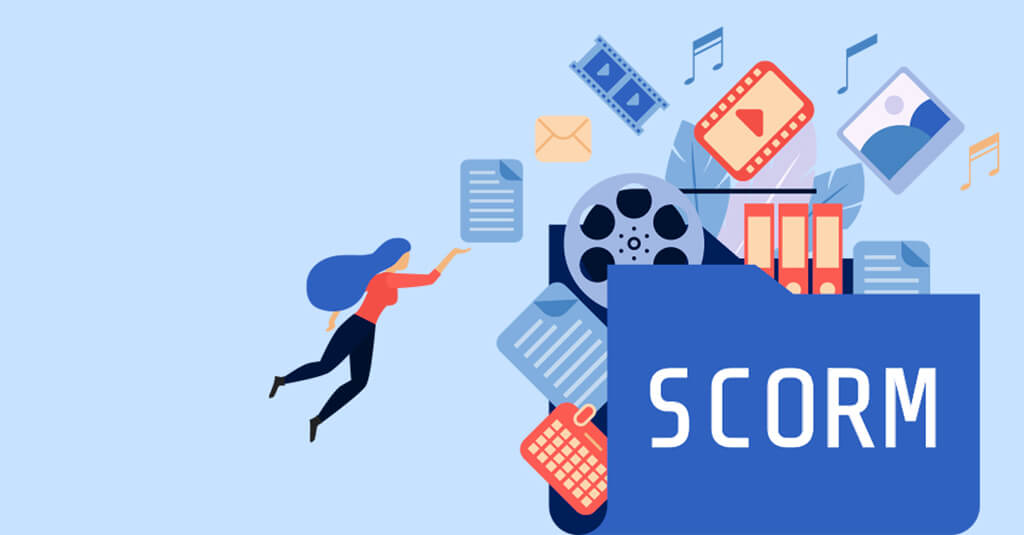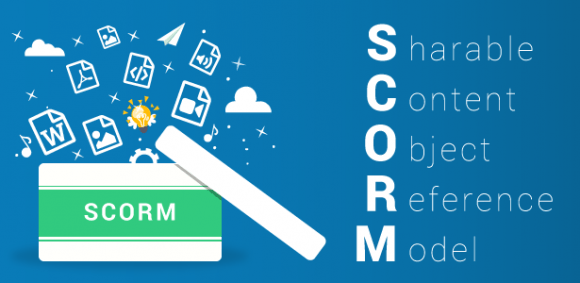SCORM Run-Time Environment
Overview of the SCORM Run-Time terrain
The SCORM Run-Time specification controls how the LMS launches content and the way the content also communicates with the LMS. All of this communication happens within the environment of one attempt on one SCO. The navigation between SCOs is governed by the sequencing laid out in the overload, and explained further then.
Launching Content
All SCORM content must be web-deliverable and every one SCORM communication occurs within the environment of an internet cybersurfer session. The LMS will launch one SCO at a time, as named by the stoner, or as determined by SCORM 2004 sequencing rules
. In performances before SCORM 2004 3rd Edition, there have been no formal conditions for the interface handed by an LMS. Every LMS is slightly different, except for the foremost part, it’s fair to anticipate an LMS to supply an interface nearly like the one pictured below.
At a minimum, it should contain some kind of passable table of contents also as controls for inflow navigation ( former and coming buttons). These nautical rudiments control the navigation betweenSCOs.However, the SCO must give its own nautical rudiments, If navigation is needed within a SCO.
The LMS has two options for launching a SCO. It can either launch the SCO ina frameset (as pictured over), or it can launch the SCO during a new window. Some LMS’s will always launch content a system or the contrary. Generally however, if a course only contains one SCO (and therefore does n’t bear and nautical rudiments from the LMS), the SCO are going to be launched during a popup window.
Again, if the course contains numerous SCOs, also the LMS will generally launch the SCOs during a frameset girdled by nautical rudiments. Some LMS’s will allow the content authors to regulate precisely how SCOs are launched, which nautical rudiments are available and indeed the confines of the SCO windows.
The API
All communication between a SCO and thus the LMS happens through an ECMAScript (JavaScript) API. this is frequently the sole way for communication to do. There aren’t any other communication channels available. Content can not communicate through web services, form posts, database writes or the other medium, only through the JavaScript API handed by the LMS.
Chancing the API
The LMS is liable for furnishing a specifically named JavaScript object during a specific position within the cybersurfer’s DOM. Therefore, the content, can always detect this API employing a common algorithm.
In SCORM1.1 and SCORM1.2, the API object is generally named “ API”. In SCORM 2004, the thing is known as
“API_1484_11”.
The API object should be located during a window that is a parent of the SCO or a parent of the nature window of the SCO. A “ parent” window is defined to be the whole chain of parent windows all the high to the base cybersurfer window. So, the API might be within the SCO’s parent, the SCO’s parent’s parent, the SCO’s parent’s parent’s parent, etc. Also, the API might be within the nature window, the nature’s parent, the nature’s parent’s parent, etc. The plates below from the SCORM 2004 3rd Edition specification illustrate the possible API locales.
Using the API
Once a SCO has plant the SCORM API, it can use the API to speak with the LMS. Note, that only the SCO can initiate communication. The LMS may be a unresistant reality that simply responds to the API calls made by the content. The LMS ca n’t initiate any communication, it simply launches the content and responds to requests.
Initialize/ LMSInitialize
The Initialize system indicates to the LMS that the content would really like to start a communication session. All SCOs must call Initialize before performing the other communication. The LMS returns a boolean indicating the success or failure of the initialization. Generally, LMS’s do n’t got to do tons of initialization and can always return “ true”.
Terminate/ LMSFinish
The Terminate system indicates to the LMS that the content is completed communicating. All SCOs must call Terminate. Calling Terminate does n’t inescapably indicate that the stoner is completed with the SCO, technically it only indicates the the SCO is completed communicating. In practice still, content are going to be more compatible and usable if Terminate is simply called when the content are frequently removed from the stoner.
GetValue/ LMSGetValue
The GetValue system allows a SCO to recoup data from the LMS. the word that is always recaptured is one among the defined SCORM data model rudiments. Each of those data model rudiments holds a special piece of knowledge.
The SCORM Run-Time data model
The run- time data model contains numerous rudiments, each which has its own meaning. the rainfall are frequently read and written using the API. The SCORM run- time reference map contains an force of every data model element along side its data type and a brief description of its meaning and operation.
Every SCO has its own set of run- time data.

Each of those data model rudiments features a separate value for every SCO within a course, data model rudiments are not participated across SCOs. Likewise, each “ attempt” on a SCO has it’s own set of run- time data. When the learner starts a relief attempt on a SCO, the word model values are going to be reset for the morning of the new attempt.
The data model rudiments are slightly different across SCORM performances, except for the foremost part there is a corresponding element in each interpretation of the norms. SCORM1.1 and SCORM1.2 have identical data models.
SCORM 2004 features a different data model set. There are minor subtle differences between the editions of SCORM 2004 also. The map provides a comprehensive reference for every interpretation/ edition. the foremost significant changes in SCORM 2004 include

